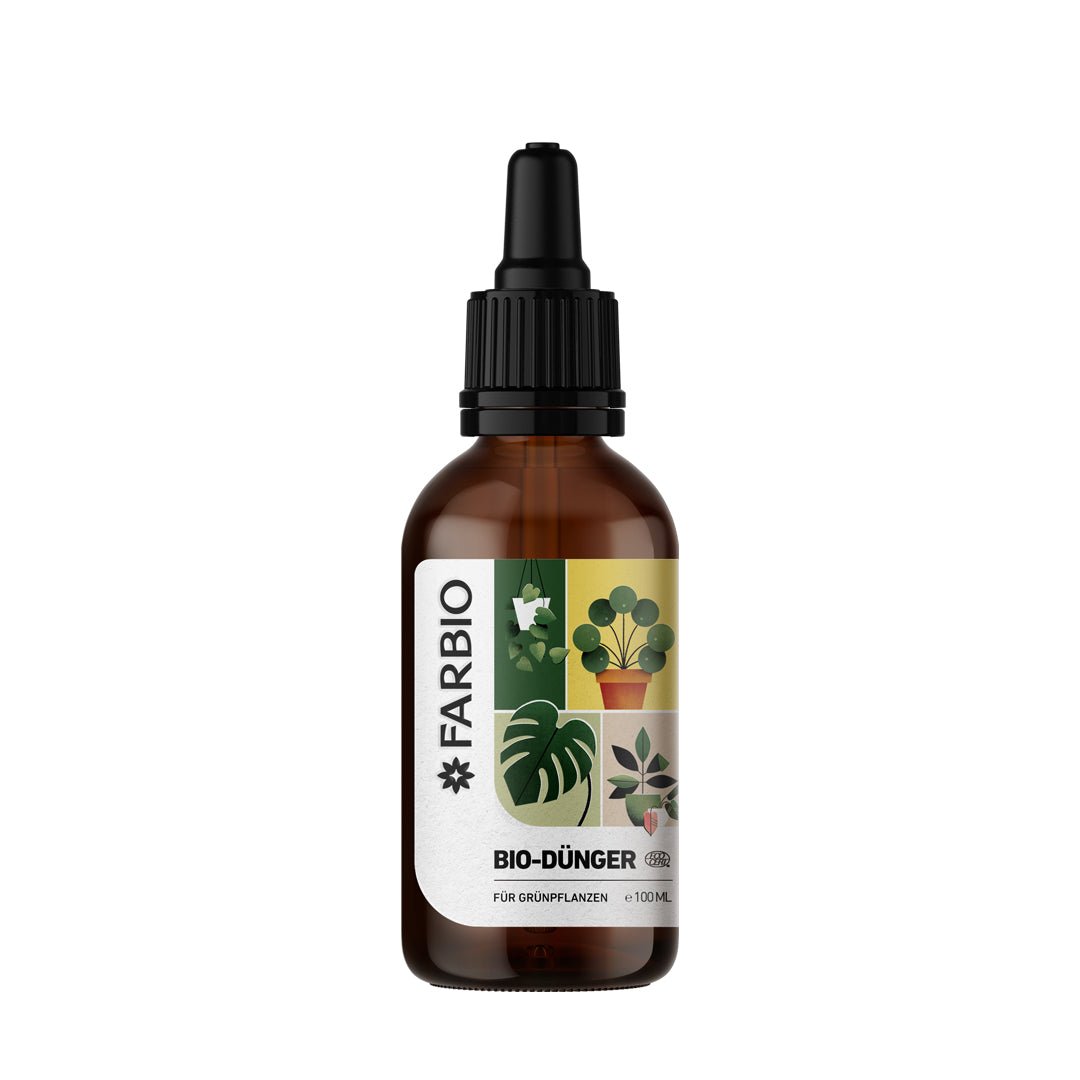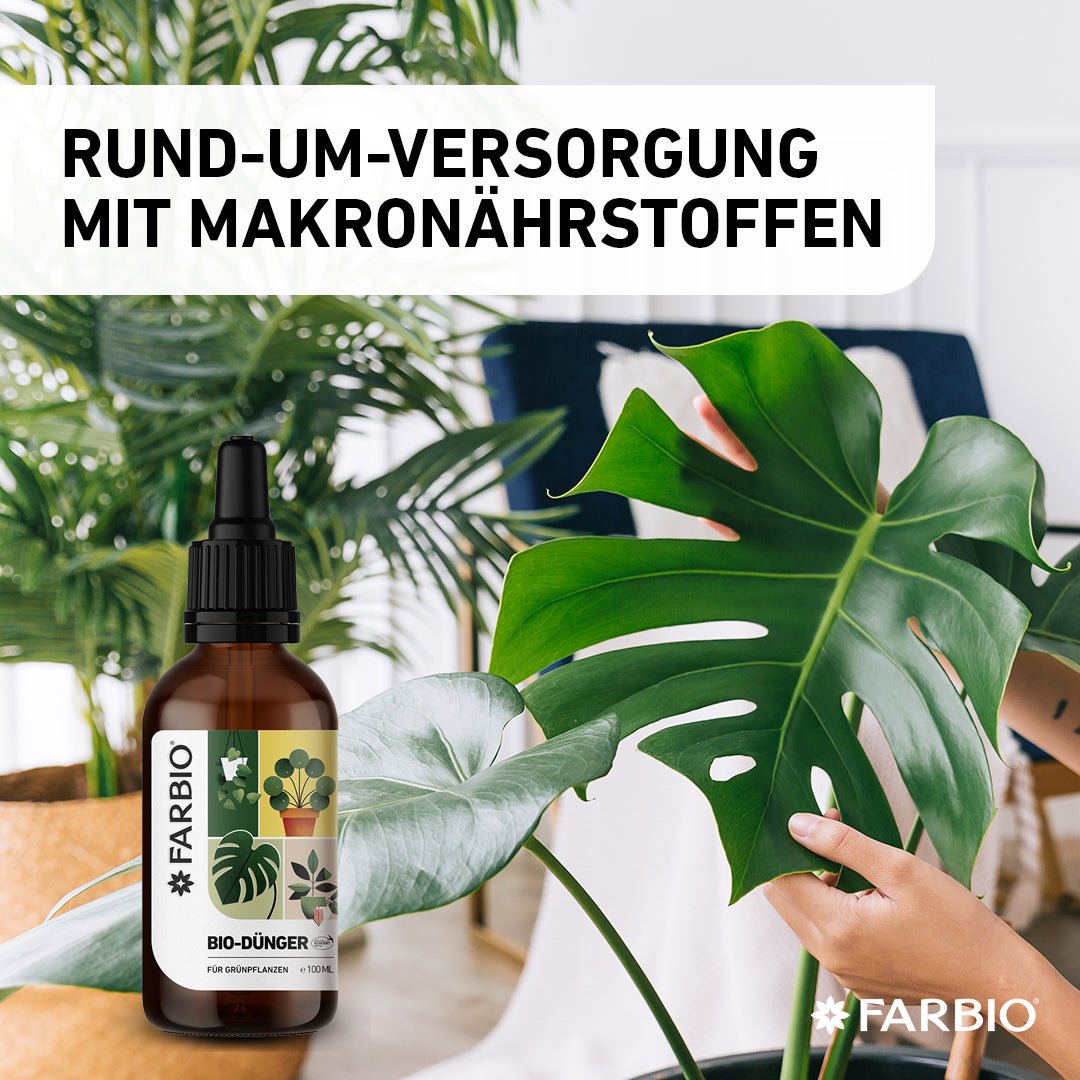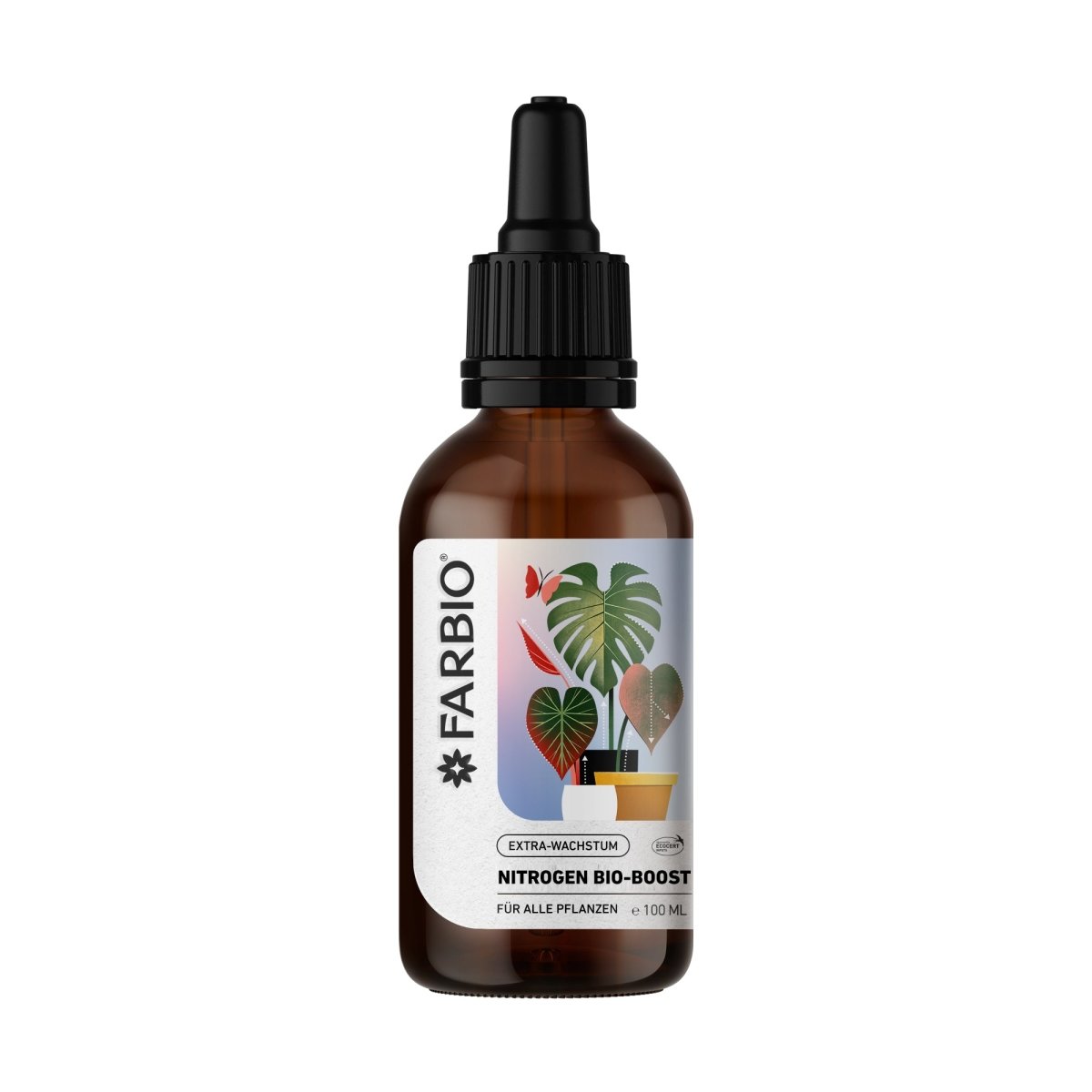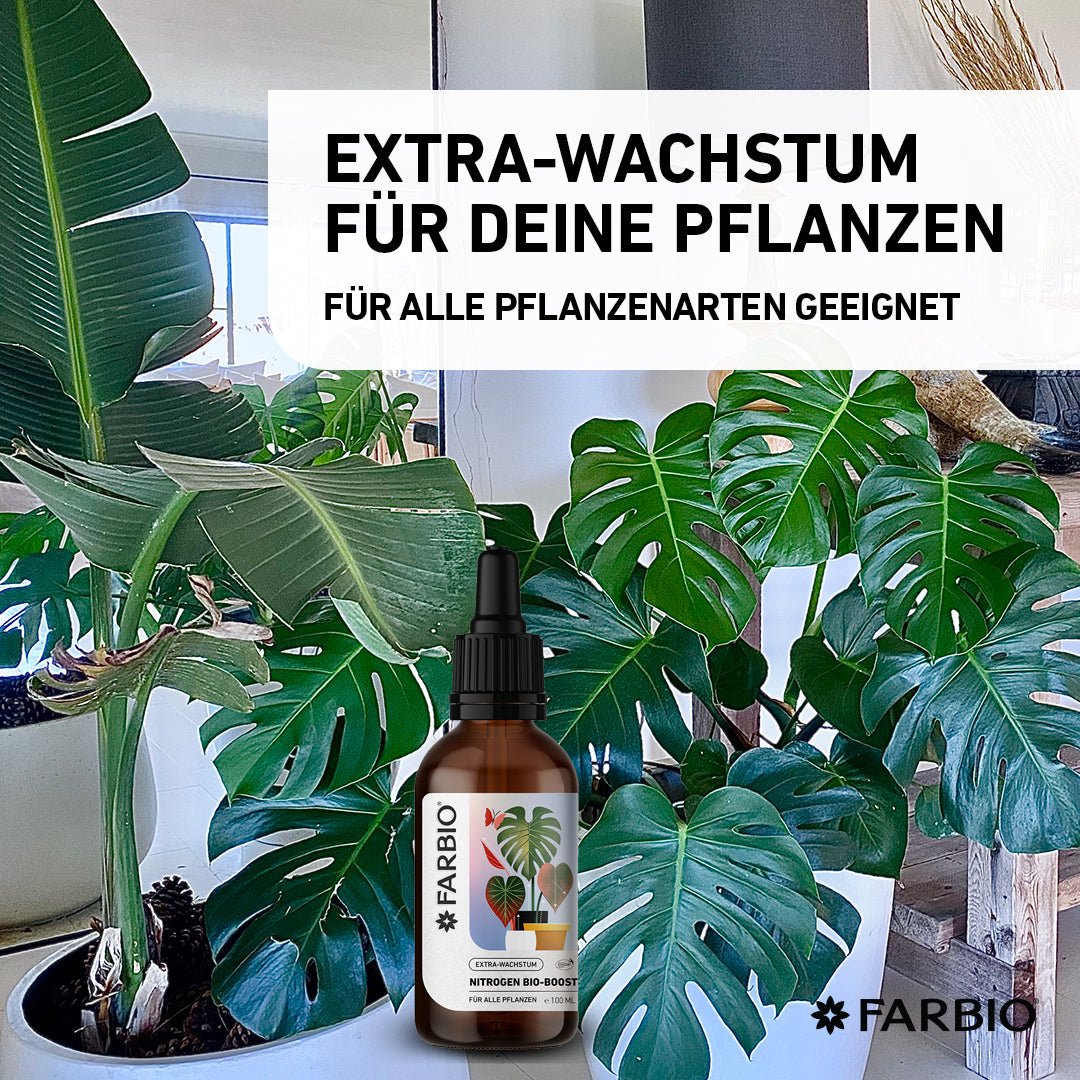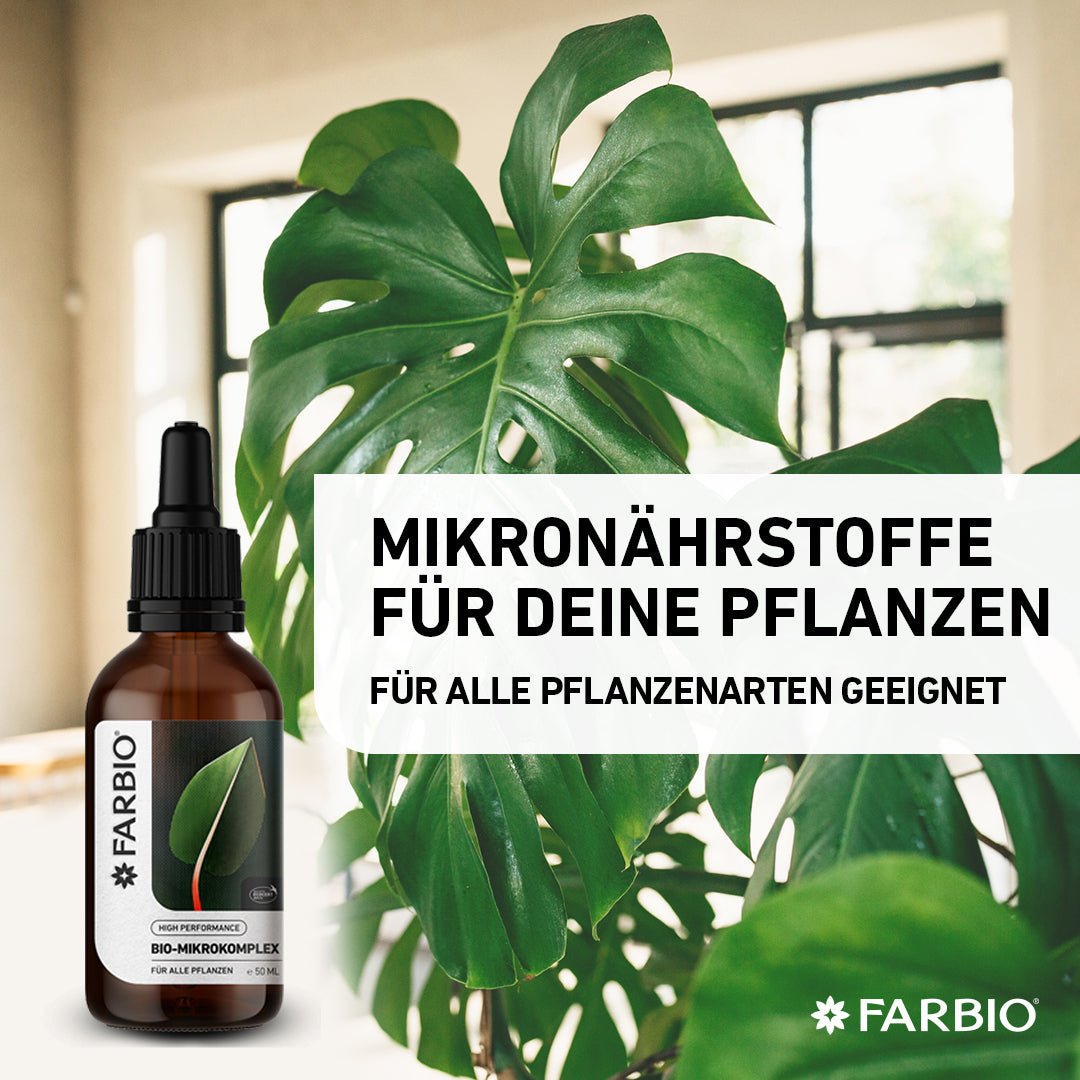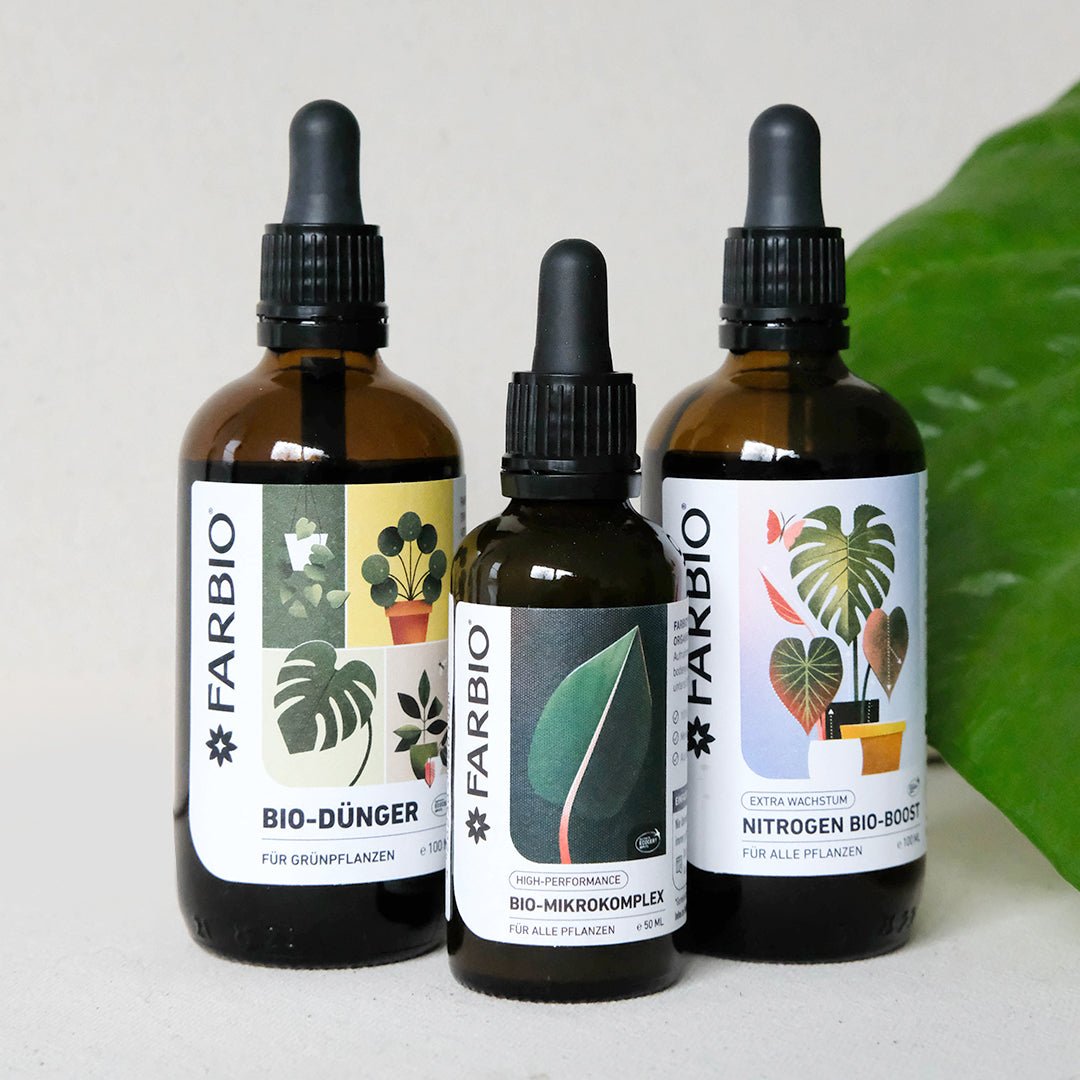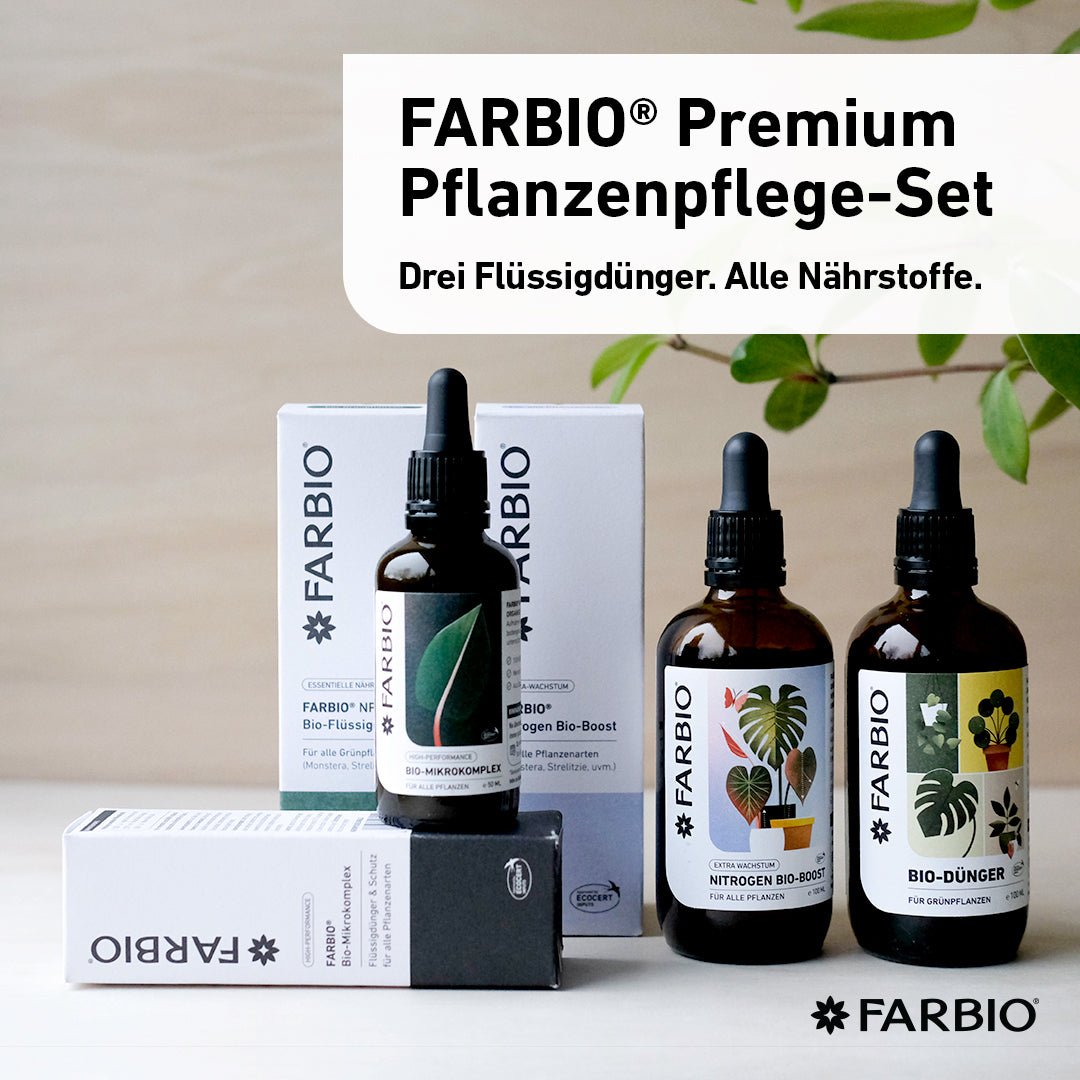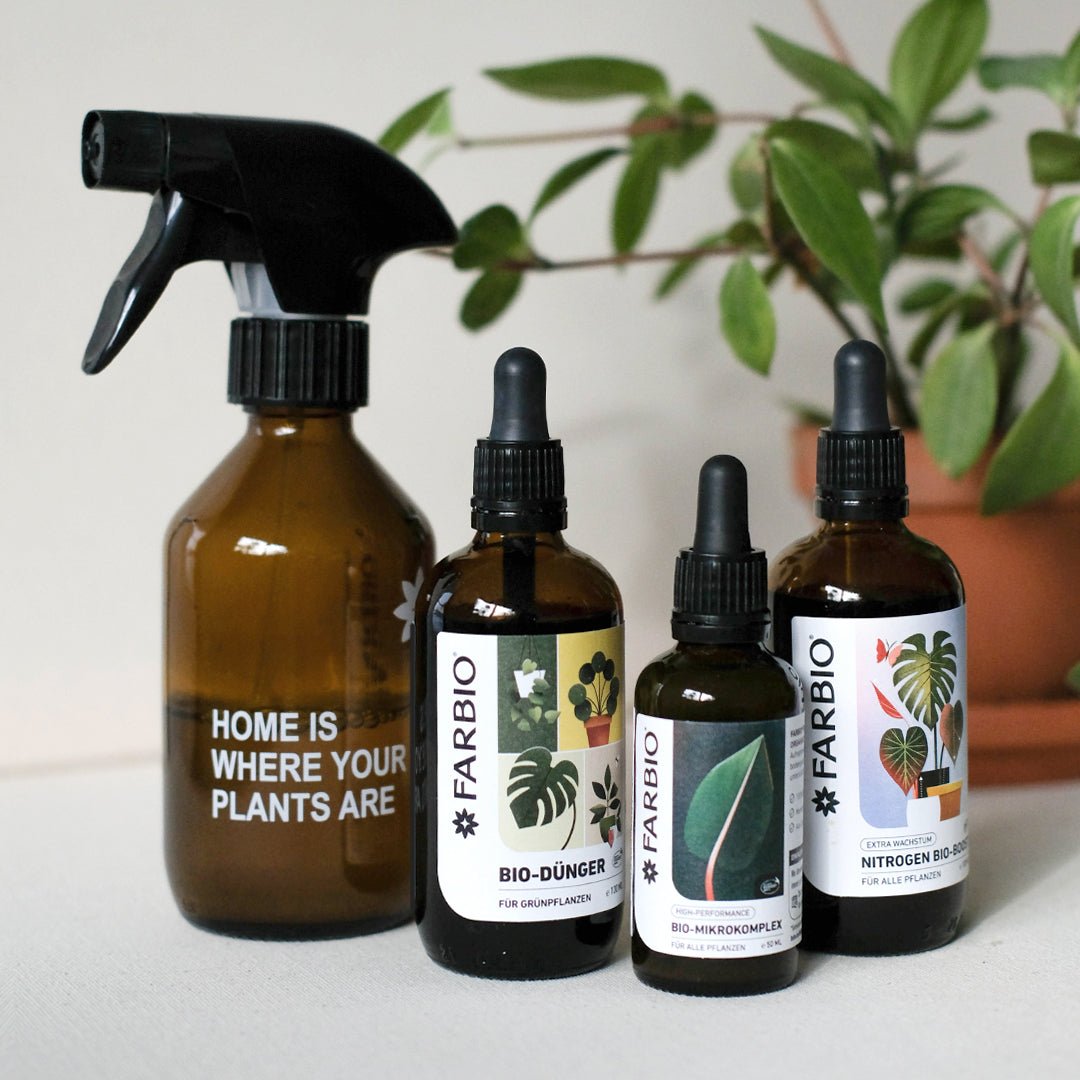FAQ - Plant knowledge
What are the ingredients of FARBIO® liquid fertilizers?
The FARBIO® liquid fertilizers have a natural origin, mainly plant-based. Currently, the FARBIO® organic nitrogen boost still has an animal origin. The organic active ingredients have a high effectiveness due to important micro and macro nutrients as well as innovative nano technology. We use selected and 100% organic ingredients - Ecocert certified! Safe ingredients for humans, animals and bees. Not tested on animals!
Can FARBIO® foliar fertilizers also be added to irrigation water?
Yes, the FARBIO® foliar fertilizers can be applied to the leaves via a spray bottle as well as mixed with the irrigation water. FARBIO® NPK liquid fertilizer can only be added to the irrigation water.
Which FARBIO® organic liquid fertilizer is right for you?
Our FARBIO® liquid fertilizer for houseplants is the basic supply for your indoor plants. As long as the healthy maintenance of your plants is important to you, we recommend it! FARBIO® organic nitrogen boost is ideal for particularly fast growth and the FARBIO® organic microcomplex supports the natural defences of your plants with micronutrients. This is plant care in a class of its own, but as a foliar fertilizer it has the advantage that the nutrients are absorbed super fast via the leaves! In general, foliar fertilizers are great if you want to keep the soil rather dry to prevent pest infestations, mould on the soil, etc. Of course, all 3 products are compatible!
Can FARBIO® organic liquid fertilizers also be used for hydroponics and mineral substrates (perlite, exclay, pumice, lava and co.)?
The complete FARBIO® product portfolio can be used safely for your hydroponics and mineral substrates and will not burn the roots! However, we note that the NPK liquid fertilizer have a brown colour and can therefore discolour the water.
Are all FARBIO® liquid fertilizers compatible with each other?
All fertilizers are compatible with each other. Our NPK liquid fertilisers can be used at the same time as the organic microcomplex and organic nitrogen boost. For the most effective absorption of the nutrients we recommend an alternating application of the foliar fertilizers: With an application every 2 weeks, spray each foliar fertilizer onto the leaves of your plant once a month.
Can FARBIO® foliar fertilizer turn variegated leaves green?
Variegation is caused by mutations in chloroplasts. Nutrients or our FARBIO® foliar fertilizers have no influence on this!
Is it possible to overfertilize with FARBIO® liquid fertilizers?
Overfertilizing with organic solutions is almost impossible. Nevertheless, you should adhere to the dosage instructions. You can recognize overfertilization in your houseplants by the fact that the leaves curl upwards from the edges. Leaf edges can turn brown.
Which nutrients do plants need or which nutrients should be fertilized?
FARBIO® organic nitrogen boost mainly provides the plant with nitrogen for the formation of leaf mass and rapid growth. The plant needs a complete nutrient profile, which is why our NPK liquid fertilizers with the main nutrients nitrogen, phosphorus and potassium should always form the basis of your plant care. In addition, the plant needs micronutrients, which you will find in our FARBIO® organic microcomplex!
How often should you fertilize demanding plants like monstera and philodendron?
Among houseplants, too, there are highly demanding plants and medium to weakly demanding plants. Monstera, philodendron, cala and alocasia are among the less frugal green plants that require a lot of nutrients. These should be fertilized once a week with an organic liquid fertilizer during their growth phase (spring and summer).
Is it possible to fertilize despite root damage?
Too much watering can lead to root rot - roots begin to rot, neither water nor nutrients can be transported and the plant dies as a result. If you fear that your plant is suffering from root rot, you should take it out of the pot and look at the roots. Often these smell foul and are slippery when root rot has occurred. These roots should then be removed if they are not all affected. Then you should repot. The optimal care are the FARBIO® foliar fertilizers, because the plant could not absorb any or only few nutrients for a long time due to the rotten roots!
How do you fertilize succulents and cacti?
Succulents grow more slowly and therefore need small amounts of nutrients. Important for succulents are mainly nutrients nitrogen, phosphorus and potassium (NPK). In spring and summer, you should fertilize about every four to six weeks with the FARBIO® liquid fertilizer for houseplants.
Favorite fertilizer
The FARBIO liquid fertilizers provide important nutrients that your plants need. You can and should combine all fertilizers with each other.
FARBIO® Organic Fertilizer for Houseplants | important nutrients for your plants
Sale priceFrom €14,99
(€149,90/l)
FARBIO® Organic Nitrogen Boost | premium liquid fertilizer | extra growth for your plants
Sale price€29,99 (€299,90/l)
FARBIO® Organic Microcomplex | premium liquid fertilizer | protection and healing for your plants
Sale price€34,99 (€699,80/l)
FARBIO® Bestseller Set: Plant Care, Protection and Extra Growth
Sale price€74,99
Regular price€79,97
FARBIO® Starter Set: Plant Care. 3x liquid fertilizer + glass spray bottle
Sale price€84,99
Regular price€94,96


